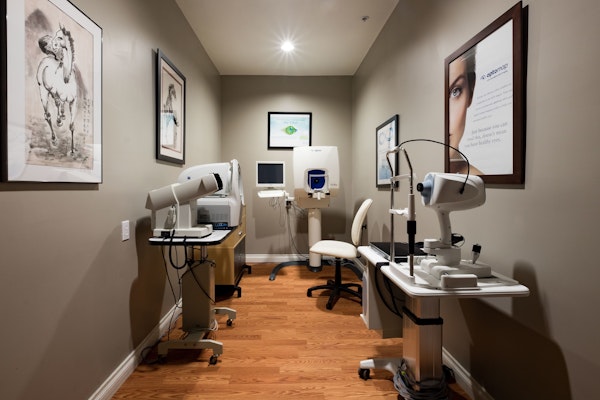Glaucoma: Symptoms, Risk Factors, Causes, and Treatment Options
 At GW Eye Associates Inc, we have assisted numerous patients their eye care and vision correction needs, helping them see clearly. This is why we have such a strong reputation in the greater San Diego area among those in need of eye care services.
At GW Eye Associates Inc, we have assisted numerous patients their eye care and vision correction needs, helping them see clearly. This is why we have such a strong reputation in the greater San Diego area among those in need of eye care services.
The topic of glaucoma has come up among a few of our patients, so we'd like to look at glaucoma treatment optons as well as causes and symptoms of the eye condition in this post.
About Glaucoma
Glaucoma is a condition in which the build up of pressure within the eye causes damage to the optic nerve. Left untreated, glaucoma will result in permanent vision loss.
There are two main kinds of glaucoma:
- Open-Angle Glaucoma - The more common form of glaucoma, open-angle or wide-angle glaucoma occurs when the fluid within the eye does not properly flow through the trabecular meshwork, which is responsible for drainage.
- Angle-Closure Glaucoma - The rarer form of glaucoma, angle-closure or narrow-angle glaucoma occurs when the angle between the iris and the cornea is very narrow, resulting in the buildup of pressure.
Symptoms of Glaucoma
Detecting glaucoma can be very difficult since early pain and warning signs tend to be difficult to detect. This is why regular eye exams are so crucial for effective diagnosis and treatment.
Some symptoms to look out for with open-angle glaucoma include:
- Gradual loss of peripheral vision
- Development of tunnel vision
Symptoms of angle-closure glaucoma include:
- Pain in the eyes
- Issues with low-light vision
- Blurry vision
- Halos and fuzziness around lights
- Redness of the eyes
Risk Factors for Glaucoma
Glaucoma is more likely given the following circumstances:
- Advanced Age - Glaucoma is more likely in people who are 60 years old or older
- Ethnic Background - People of African descent older than 40 run a greater risk of developing glaucoma than Caucasians; people of Asian descent run a higher risk of developing angle-closure glaucoma than other ethnic groups
- Family History - If your family has a history of glaucoma, developing the condition is more likely
- Previous Eye Problems - Eye injuries and conditions such as tumors, retinal detachment, lens dislocation, and inflammation can increase risks of developing glaucoma
- Other Systemic Health Issues - Glaucoma is more likely in people who suffer from diabetes, hypertension, and heart disease
Treatment Options for Glaucoma
Treatments for glaucoma range from non-invasive to surgical in nature, generally starting with less-invasive therapies and progressing as needed. They include the following:
- Medicated Eye Drops - Eye drops will help reduce pressure within the eyes
- Oral Medication - Oral medications to reduce intraocular pressure are often used as a supplement to eye drops
- Laser Surgery - Laser surgery on the eye can help open up drainage canals and ease intraocular pressure in the process
- Trabeculectomy - This procedure involves the creation of a small incision on the white of the eye in order to reduce intraocular pressure
- Drainage Implants - This procedure will involve the surgical placement of small tubes in the eye in order to drain fluid and reduce pressure
Can glaucoma be prevented?
Preventing glaucoma (particularly open-angle glaucoma) is difficult, but improving your general health and wellness can help reduce your risk of developing glaucoma in the future. Keep the following basic wellness tips in mind:
- Wear eye protection when applicable
- Eat healthy
- Exercise regularly
- Have your eyes regularly examined
Schedule a Consultation at GW Eye Associates Inc
To learn more about glaucoma and how it can be properly diagnosed and treated, we encourage you to contact our eye care and vision correction specialists today. The team at GW Eye Associates Inc looks forward to your visit and helping you achieve excellent vision and optimal eye health.







